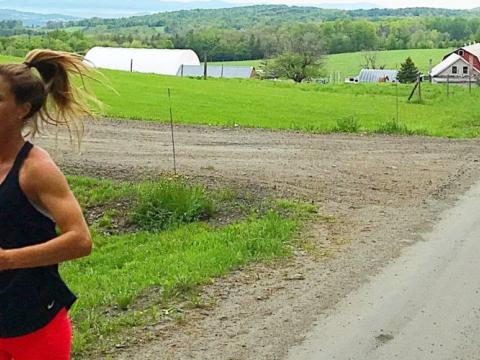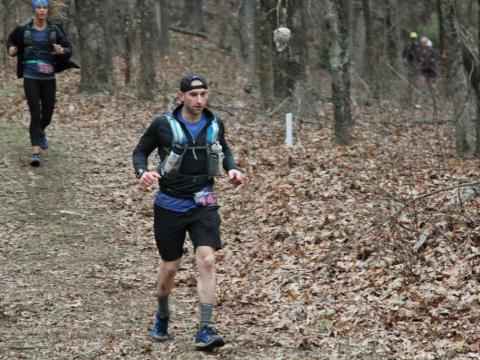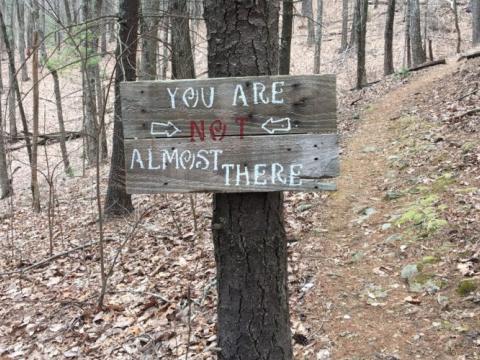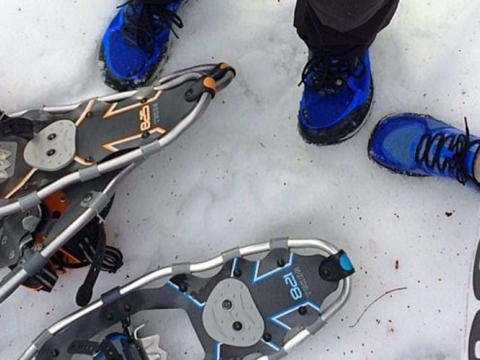
Miles & Smiles Ultrarunner
Crystal Seaver looks more like a gym rat than an ultrarunner, but she races among the best thanks to her devotion to strength training.
On the outside, Crystal Seaver didn’t look hurt. In fact, she was having a good day at the 2014 Peak 50 Ultra in Vermont, climbing the technical Green Mountain trails with power. But as she approached mile 30, she knew something was wrong. Her knee throbbed, causing severe pain. She could barely baby step the downhill sections of the course. “I considered rolling down over all of the loose rocks because I couldn’t move fast enough,” says the Waterboro, Maine, resident.
Seaver had to make a decision: continue to push and finish the race or walk off the course at the next aid station. The thought of stopping didn’t seem fair. “I was having the perfect race. I felt strong. It was nice out. It’s my favorite area,” she says. “But I was also smart enough at this point to know I was injured versus hurting.” When she reached the aid station at mile 37, she stopped, collecting her first Did Not Finish or DNF.
"I didn’t value the fact that I have all these small muscle groups that are really important, especially on the trails."
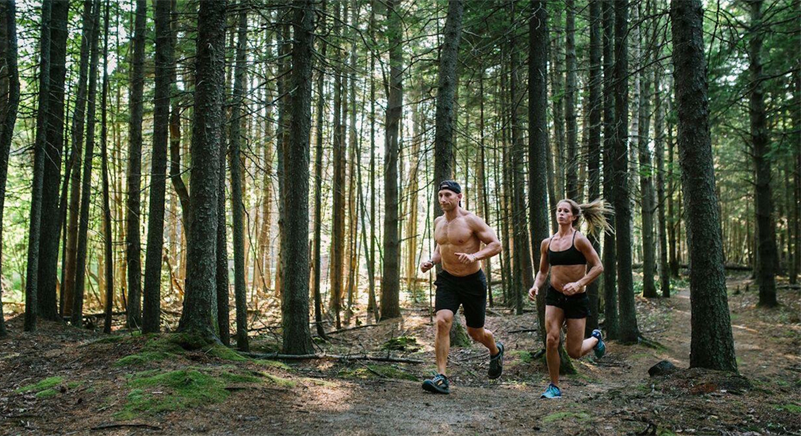
It turns out, Seaver nearly shredded her IT band. “Had I not stopped, it would have ruptured,” she says. Her doctor ordered no low-impact activity for a month and no running for six weeks. “It was a big wake-up call, mentally and physically,” she says. Her lesson? Trail running isn’t just about adding miles upon miles. It’s about becoming a balanced athlete who can respond to diverse conditions. “I didn’t value the fact that I have all these small muscle groups that are really important, especially on the trails,” she says. “I injured myself because I wasn’t doing anything strategic to complement my running at the time.” Growing up, sports and running weren’t a big part of Seaver’s life. She started running after college and ran her first ultra—a 30-miler—in her mid-20s. “I probably had no right being there.
I certainly wasn’t trained for it and had no idea what my nutrition should look like for the day,” she says. She followed a traditional training plan that prioritized mileage and speedwork. “Ultimately, it led me to be fast but not good on trails,” she says. "There’s an assumption that I have too much muscle to run well, based on the stereotype of what a runner looks like." There’s a common notion that you can either run or you can strength train. When you’re logging upwards of 60 or 70 miles a week, there’s not a lot of extra time in your schedule and running wins over a training session at the gym every time. But Seaver thinks that’s a false dichotomy. The 31-year old certified personal trainer treats running as a skill; strength training is an essential component that complements her ultra training. “In trail running, we’re never strictly running at a set pace. We face rocks, mud, and climbing,” she says. “Total body conditioning has allowed me be more efficient on the trails.” Her routine focuses on components such as posture, stabilization, and power to help her perform better.
Resistance band work and physical therapy-like exercises such as lateral walks, lunges, and fire hydrants are the bread and butter of her routines. She also incorporates a myriad of functional movements, plyometrics and plank variations to keep it interesting and make the most of her workout time. Her typical strength routine takes 15 to 20 minutes. Seaver’s gym sessions also allow her to balance hard and easy training days. Mondays are recovery days with an easy run and a strength session that targets her core, hips, and glutes. To give her legs a break, she does an upper body and core workout on Wednesdays. To simulate the tired legs she’ll likely experience in a race, she’ll sometimes do a heavy leg day before a long run. While people often think she’s training for a fitness competition, not ultras, she believes her total body conditioning approach makes her a stronger runner. “There’s an assumption that I have too much muscle to run well, based on the stereotype of what a runner looks like,” she says. “I ascribe to a lower mileage ultra training plan than most people. I can only attribute my ability to do that and run well to my strength training.” Plus, there’s so much diversity of body type in the trail running community that she says her lean, muscular physique doesn’t elicit many comments.
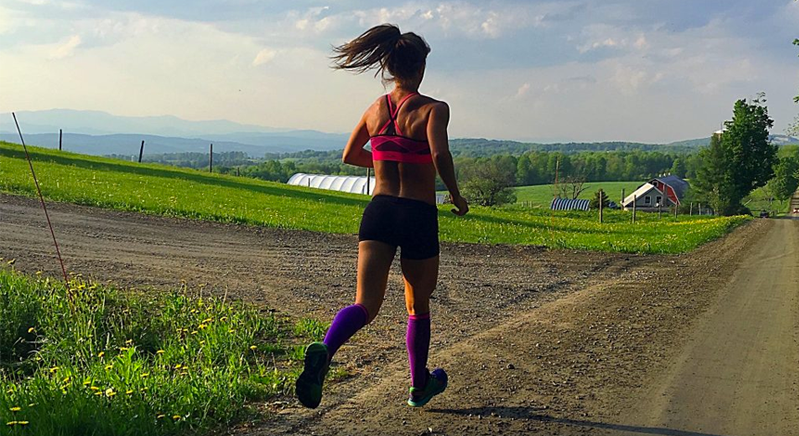
To celebrate her 30th birthday last year, Seaver ran the Georgia Death Race with her boyfriend, Jesse. Dubbed as the hardest race east of the Rockies, the point-to-point course winds through approximately 70 miles in northern Georgia from Vogel State Park to Amicalola Falls State Park with 40,000 feet of elevation change.
This year, they’re continuing the birthday tradition and running the ultra again in April. "The race can’t be any worse than the winter we’ve just trained through." It’s been a rough training season in New England. She’s run over snow-covered trails, slipped and slid her way through the slush and ice, and logged many, many miles on the treadmill. Her training peaks at 60 to 65 miles, which is low mileage for an ultra runner. She runs approximately 20 miles during the week and two back-to-back long runs on the weekend, covering roughly 40 miles. Overall, she feels good. “[The race] can’t be any worse than the winter we’ve just trained through!” she says. And this year, they’re much better prepared for what to expect—like the whipping wind along the ridgeline at night and the 600 stairs near the finish line—and the gear they’ll need.
Mostly, Seaver’s excited to return to Georgia to climb the single-track trails, take in the scenery, and be part of the community of ultra runners. “The atmosphere at these races is what makes it for me,” she says. “It's laid back. It's like a reunion every time. You get to push through the hard with some great people and you always make new friends.” Looking to beef up your own strength training routine? Try these killer core exercises, simple exercises that will change how you run, and don't forget to work on your hips.

